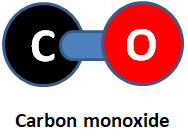The disease caused by the new coronavirus (SARS-CoV2), called Covid 19, affects with varying severity from subject to subject. It tends to be more severe in older ages, in men and in individuals with other pathologies. However, even in subjects with similar risk factors there can be variable pictures, from asymptomatic to fatal, on the basis of an individual predisposition that is under study and that is linked to our greater or lesser ability to trigger the defensive mechanisms.
For several years we have known that a fundamental mediator of these defenses is a gas produced by our metabolism,  hydrogen sulphide (H2S). This gas, when released from virus-affected lung cells, spreads to nearby blood vessels and temporarily blocks the ability of white blood cells to induce inflammation. Without inflammation, the virus cannot replicate and the disease does not occur. This mechanism weakens with advancing age and is more active in women of childbearing age because estrogen stimulates one of the pathways that activate it. According to some studies, the new coronavirus is able, more than other viruses, to block this mechanism. This susceptibility has a genetic basis. Several scientific evidences indicate the HMOX1 gene, which encodes for the enzyme heme-oxygenase (HO-1), as the one most directly involved.
hydrogen sulphide (H2S). This gas, when released from virus-affected lung cells, spreads to nearby blood vessels and temporarily blocks the ability of white blood cells to induce inflammation. Without inflammation, the virus cannot replicate and the disease does not occur. This mechanism weakens with advancing age and is more active in women of childbearing age because estrogen stimulates one of the pathways that activate it. According to some studies, the new coronavirus is able, more than other viruses, to block this mechanism. This susceptibility has a genetic basis. Several scientific evidences indicate the HMOX1 gene, which encodes for the enzyme heme-oxygenase (HO-1), as the one most directly involved.
The gene has an initial sequence (promoter) that gives the signal for its use and therefore for its expression. People who have inherited a long promoter (many GT repeats) are slower in activating the gene and may react too late, which is when the virus has already started to replicate and is already strong enough to block our defenses. This genetic test, actually relatively simple and cheap, is not yet available in clinical routine.

The HO-1 enzyme metabolizes the heme group of hemoglobin by releasing a gas, carbon monoxide (CO). CO in turn activates the release of H2S and antiviral defenses. It is therefore possible that, by stimulating CO and / or H2S activity, even subjects very susceptible to coronavirus can be made more resistant. Even before the epidemic, several drugs were being developed with this goal (also useful in cardiovascular disease) but none of these are already available. The fundamental problem is that these mechanisms must act only where and when they are needed while a drug stimulates their activity regardless of need. The drugs could cause too high levels of CO or H2S, which are highly toxic, and tolerability is difficult to guarantee.
therefore possible that, by stimulating CO and / or H2S activity, even subjects very susceptible to coronavirus can be made more resistant. Even before the epidemic, several drugs were being developed with this goal (also useful in cardiovascular disease) but none of these are already available. The fundamental problem is that these mechanisms must act only where and when they are needed while a drug stimulates their activity regardless of need. The drugs could cause too high levels of CO or H2S, which are highly toxic, and tolerability is difficult to guarantee.
Ideally, we should strengthen the natural release mechanisms so that, when needed, their activity is prompt and complete even in genetically “weak” people. A possible help can be achieved by a correct diet. It is noted that the main dietary substrate for the release of H2S is the amino acid cysteine, which is the least abundant in dietary proteins but however more available from eggs and from vegetable proteins. H2S release also necessitates good amounts of Vitamin B6, which is in turn more available from animal foods. Again, an equilibrated and varied diet appears as a best option for a healthy life.
For details, see: Dattilo M. The role of host defenses in Covid 19 and treatments thereof. Mol Med 2020 Sep 29;26(1):90
Redostim,
daily wellbeing